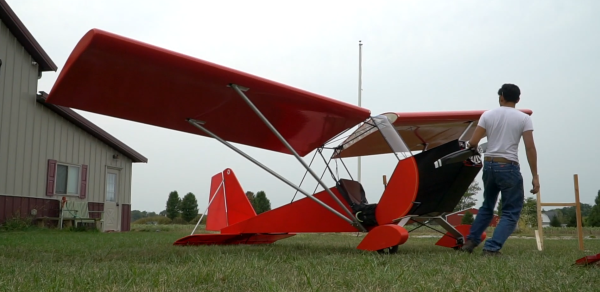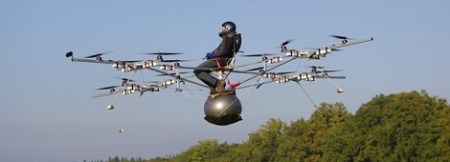If there’s one thing you can count on [Peter Sripol] for, it’s for defining the the aviation category of “Don’t Try This At Home.” In the video below the break, [Peter] displays his latest terror of the skies: A powered paraglider backpack that has fifty electric motors. Does it fly? Yes. Was it a success? Eh… mostly.
As [Peter] even says in the video: Don’t try this at home. [Peter] has taken a paraglider, which is essentially a non-rigid fabric wing that to the untrained eye resembles a parachute, and powered it with fifty drone motors taken from other projects. Two motors each are mounted in a push/pull configuration inside a 5×5 array of 3d printed ducts.
While the experiment was essentially a success, it was also a failure due to not having enough power, too little battery life, and overall just not being that great. Does every experiment need to end in absolute success in order to have fun and learn lessons that can be applied to the next iteration? Definitely not! We applaud [Peter] for being willing to fail- although, we have to admit, failing is a lot easier when you’ve already got a parachute of sorts deployed!
Looking for some more don’t-try-this-at-home projects to gawk at? Look no further than [Colin Furze] who like [Peter], has managed to gain his own Hackaday tag.
Continue reading “Fifty Motored Paraglider Partly Flies, Partly Glides”















